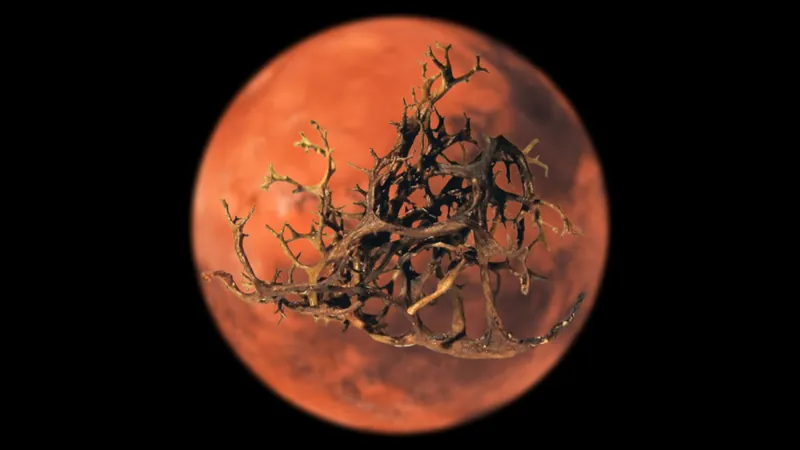
Could Lichens Live on Mars? New Study Says Yes!
2025-04-20
Author: Sarah
Lichens: The Toughest Life Form on Earth?
A groundbreaking study reveals an astonishing possibility: life from Earth, specifically lichens, might endure the harsh conditions of Mars! Recent experiments have shown that these resilient lifeforms can withstand levels of Martian radiation, raising exciting questions about extraterrestrial survival.
Mars: A Harsh Desert, But Not Lifeless?
Mars, known as the Red Planet, is a relentless desert with a thin atmosphere, freezing temperatures, and a daunting lack of surface water. Yet, the harshest factor preventing life from thriving is its weak magnetic field, leaving it open to hazardous cosmic rays and solar flares that can wreak havoc on biological cells.
The Resilient Lichen Duo!
In a remarkable study published in IMA Fungus, researchers subjected two lichen species—*Diploschistes muscorum* and *Cetraria aculeata*—to a barrage of radiation equivalent to a year on Mars, condensed into just five hours. Conducted at the Space Research Centre in Poland, the experiment mimicked Martian conditions with precise atmospheric pressures and temperatures, revealing that both lichens not only survived but remained metabolically active!
Diverse Lives with Cosmic Potential!
Kaja Skubała, a researcher at Jagellonian University, emphasized that these findings shed light on how hydrated organisms cope with severe cosmic radiation, enhancing our understanding of lichen adaptability. Notably, *D. muscorum* outperformed its counterpart, showing remarkable radiation resistance. However, long-term survival remains questionable due to Mars’ lack of liquid water.
The Future of Life on Mars: More than Just Lichens!
Interestingly, lichens aren't alone in the quest for Martian life. Tardigrades, those microscopic warriors known for their extreme resilience, might also be suitable travelers to the Red Planet. Capable of surviving extreme environments, their ability to enter suspended animation makes them potential candidates for future exploration.
Mosses and hardy bacteria could also join the Martian party. Certain mosses resist gamma rays and extreme cold, while some bacteria might lay dormant underground, surviving for millions of years.
Human Beings: The Unlikely Colonizers!
Yet, the first life forms to set foot on Mars will likely be humans, despite our natural unpreparedness for such a harsh climate. NASA is gearing up for its first crewed mission in the 2030s, and the experience is bound to be a profound confrontation with the planet's brutal conditions.
Final Thoughts: The Possibility of Life Beyond Earth!
As the puzzle of extraterrestrial survival continues to unfold, the study opens the door to new explorations on Mars. Who knows? Perhaps lichens will lead the charge as we uncover the secrets of life beyond our own planet!





 Brasil (PT)
Brasil (PT)
 Canada (EN)
Canada (EN)
 Chile (ES)
Chile (ES)
 Česko (CS)
Česko (CS)
 대한민국 (KO)
대한민국 (KO)
 España (ES)
España (ES)
 France (FR)
France (FR)
 Hong Kong (EN)
Hong Kong (EN)
 Italia (IT)
Italia (IT)
 日本 (JA)
日本 (JA)
 Magyarország (HU)
Magyarország (HU)
 Norge (NO)
Norge (NO)
 Polska (PL)
Polska (PL)
 Schweiz (DE)
Schweiz (DE)
 Singapore (EN)
Singapore (EN)
 Sverige (SV)
Sverige (SV)
 Suomi (FI)
Suomi (FI)
 Türkiye (TR)
Türkiye (TR)
 الإمارات العربية المتحدة (AR)
الإمارات العربية المتحدة (AR)